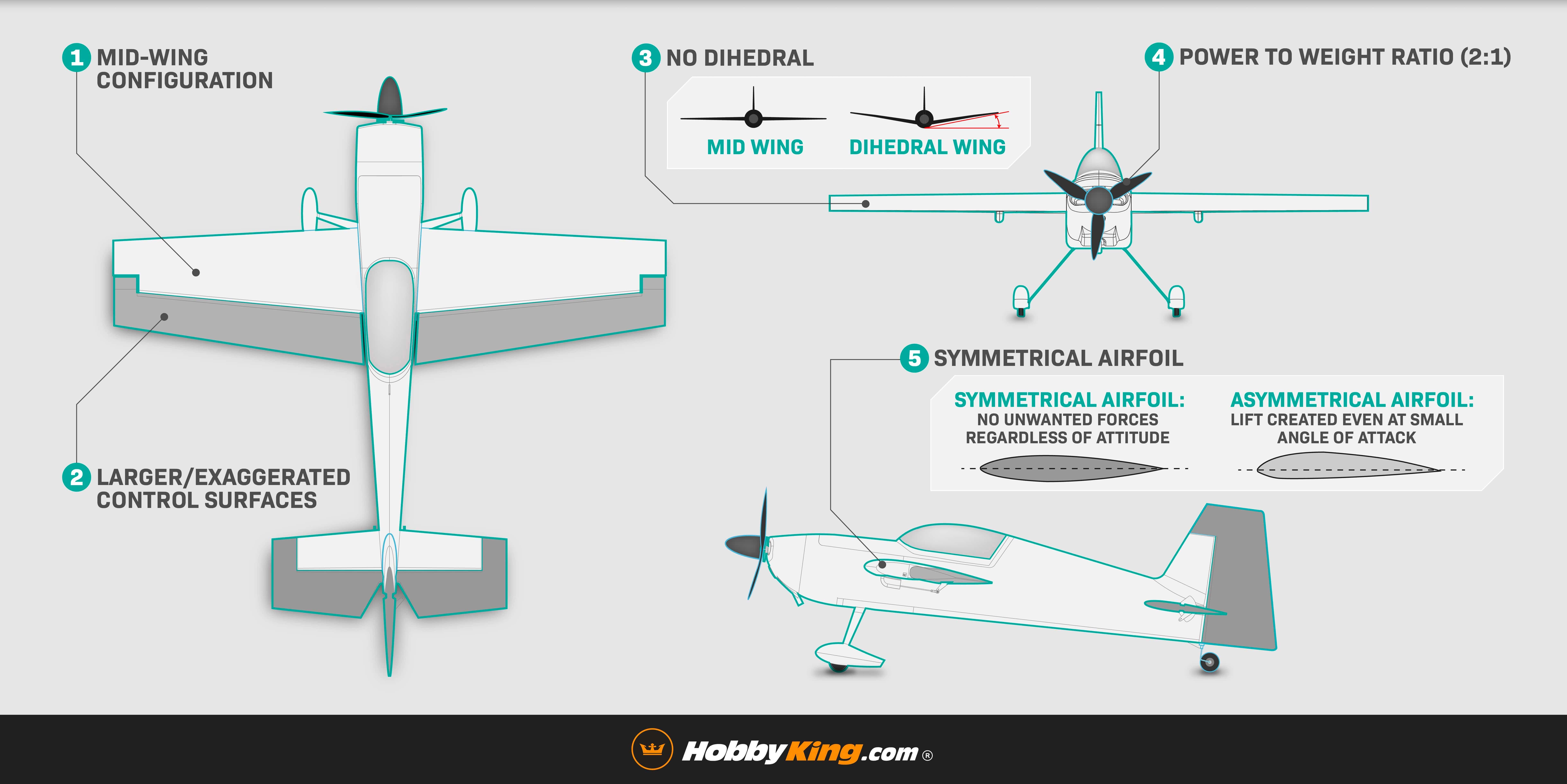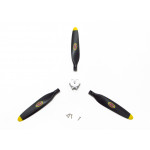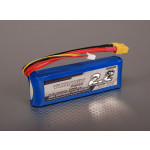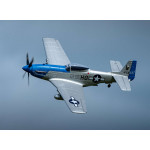
At some point in your RC piloting career, you will want to break and transition into the aerobatic scene. However, what makes a good 3D aerobatic plane?
While basic aerobatics such as a simple loop can be achieved on most RC airplanes, various distinct features separate a true aerobatic plane from the rest. In this blog, we look at five characteristics that all 3D aerobatic planes should have.
Large or Exaggerated Control Surfaces
Aerobatic RC planes are built with larger control surfaces (relative to their size) than regular warbirds or trainers. Bigger control surfaces result in greater deflection, giving your RC model improved roll, pitch, and yaw rates. Simply put, your control surfaces will be much more effective and potent allowing you to complete advanced aerobatic maneuvers at high and low airspeeds - which are otherwise unavailable on your regular RC models.
However, bigger control surfaces can also make your RC plane much more jittery and harder to fly. This is where the exponential function - found on newer radios - comes into play. You can program and reduce the level of deflection (response) around central stick movements while maintaining full deflection at greater stick movements. This makes your RC plane less sensitive and much easier to fly when you are cruising around and getting ready for your next trick.
Mid-Wing Configuration
Most aerobatic RC planes are designed with a mid-wing configuration, with the wing fitted at the mid-portion of the fuselage. Unlike high or low-wing RC airplanes, a mid-wing model is neither top heavy nor bottom heavy. This inhibits any self-correcting tendencies, which can be detrimental when it comes to performing 3D aerobatics. Just imagine trying to roll your plane to the right while an opposite force keeps pushing you back into equilibrium.
Mid-wing planes are also more streamlined than their high or low wing counterparts, resulting in less interference drag. The combination of a more streamlined build, with no self-correcting properties enable an aerobatic RC plane to maneuver with precision and maintain different orientations (attitude) with ease.
Symmetrical Airfoil (Aerofoil)
When it comes to aerobatics, airfoil - the cross-sectional shape of a wing - plays a significant role. A trainer RC plane will normally have an asymmetrical airfoil where the upper surface is curved, while the bottom is flat. This allows the trainer to generate lift at zero angle of attack and this extra lift can save your RC plane in a lot of sticky situations. However, if your trainer was turned upside down, the lift instantly becomes an excessive downward force, hence, flat bottomed airfoils are not ideal for inverted flying.
On the opposite end of the spectrum, we have symmetrical airfoils which are much more suited for aerobatic planes. Because they have the same upper and lower shape, an equal amount of lift and downward force are generated regardless of the orientation. So, if you were performing a roll or flying invertedly, no unwanted force will derail your maneuvers.
No Dihedral
Dihedral is the angle formed when both wing panels of a fixed-wing aircraft are slightly angled upwards. This upward “V” angle gives an aircraft greater lateral stability. If a disturbance (such as a gust of wind) causes one wing to dip, the lower wing will produce more lift and push your aircraft back into level.
Similar to the properties of a high and low wing configuration, dihedral is a self-correcting mechanism that is counterproductive on an aerobatic RC plane. While you may find dihedral on an aerobatic trainer, at the more advanced level it is more restrictive than beneficial.
2:1 Power-to-Weight Ratio
Speed is not a necessity when it comes to performing aerobatics, however, power is a must. Power is dependent on the weight of your RC plane and while a 1:1 power-to-weight ratio will suffice, a 2:1 power-to-weight ratio is much more common.
Power-to-weight simply refers to the thrust generated relative to the weight of your plane. So, a 2:1 power-to-weight ratio means that the thrust generated must be two times the weight of your plane. This is extremely important as a lot of the more advanced maneuvers are performed post-stall and adequate power is needed for your RC plane to recoup and aggressively pull off these moves. Greater power also allows your plane to counter inertia and make sharp turns on a dime.
Final Words
If you have decided to take the next step in the hobby and embark on your aerobatic journey, then your first aerobatic RC plane should be a mid-wing model with little or no dihedral, designed with large control surfaces with symmetrical airfoils, and entail a 2:1 power-to-weight engine or propeller. If you don’t know where to begin, you can check out our H-King (ARF) Wargo Signature Edge 540T, H-King Voltigeur or H-King MX2 which are both popular aerobatic choices and consist of all the features mentioned above.
---
Hear it First: Join our Mailing List
Sign up to receive new product updates, exclusive discounts, news, and more!





